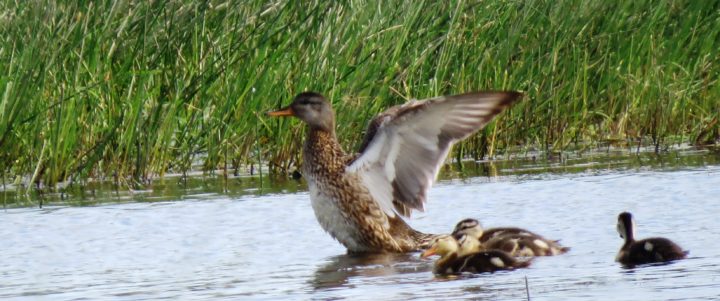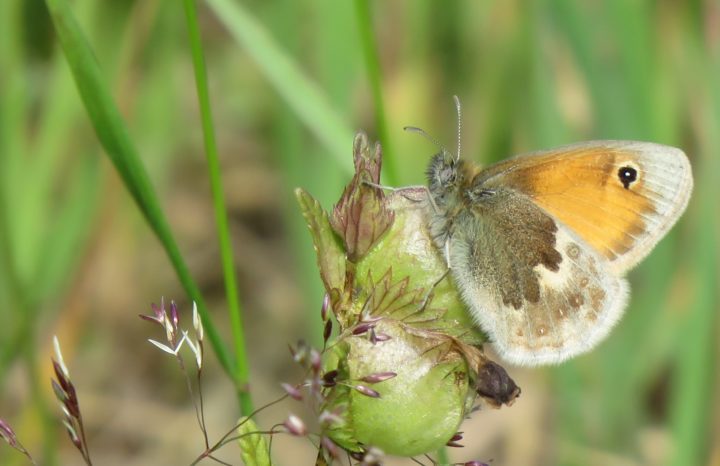Gosforth Park Nature Reserve has been the place to be of late, and not just because of the fine, summer weather we have experienced here in the North East. No, as ever it is the wildlife of this urban gem that has provided the biggest draw to visiting naturalists. So much so that we’re truly spoilt for choice when listing the highlights of the past month.
Given the season, sightings of rare birds at the reserve have been few and far between. Although the sight of a roving Great White Egret in June surely put a smile on the faces of those lucky enough to encounter the leviathan during its fleeting visit. For those less interested in chasing rarities, it has been the Kingfishers which have provided the greatest allure – with multiple individuals showing daily from both the Pearce and Ridley Hides.
Elsewhere on the avian front, we’re delighted to announce that Gadwall have bred successfully on the reserve for the second year running, the ducklings adding to the glut of youngsters to be observed at this time of year. Their success mirrored also by our Tree Sparrows which successfully bred at the site for the first time in living memory. Sticking to the fledgeling theme, it seems too that our resident colony of Common Terns have enjoyed a bumper breeding season and there is still time yet to enjoy the antics of the chicks before they take flight.
Elsewhere on the reserve, other birds of note include Water Rail, Tawny Owl, Kestrel, Buzzard, Yellowhammer and multiple Little Egrets.

Given the nature of the season, invertebrate life has risen to prominence over recent weeks. The undisputed highlight coming from a sighting of a queen European Hornet by NHSN staff last week – evidence of the continued presence of this species in the area. It would seem that the Hornet colony at the reserve remains the most Northerly in the country, for now at least.
Butterflies have added a welcome touch of colour to forays over recent weeks. A sighting of Small Heath during a volunteer butterfly survey was most welcome, while sightings of Painted Lady (most often in the Lodge garden) show no signs of letting up – mirroring the wider eruption of this species nationwide. Elsewhere, other species observed include Ringlet, Common Blue, Meadow Brown, Speckled Wood, Large Skipper, Small Skipper, Small White and Red Admiral.
On a slightly less striking but perhaps more impressive note, moth trappers at the reserve also recorded a county first in the form of a White-Speckled Bagworm. A Hummingbird Hawk-moth, observed by Chris Wren, was also of note.
Sightings of various Odonata are increasing of late with four species of Dragonfly observed on the wing: Four-spotted Chaser, Broad-bodied Chaser, Common Darter and Ruddy Darter. Add to these copious numbers of Common Blue, Blue-tailed, Large Red and Azure Damselfly, and there has been more than enough to keep enthusiasts engrossed for hours.

As one of the most diverse sites in the local area when it comes to mammal species, it is little wonder that the larger, furrier residents of the park have continued to capture the attention of lucky observers. As ever, Roe Deer remain the most frequently sighted woodland resident; although luckier visitors have also enjoyed sightings of Fox, Badger and Stoat. Otters too remain in evidence while a recent bout of trail cam/small mammal monitoring also yielded sightings of Hedgehog, Bank Vole and Weasel.
What can you hope to see over the coming weeks at Gosforth Park Nature Reserve? Well, insects will surely remain top of the agenda. We eagerly await the year’s first sightings of White-letter and Purple Hairstreak at the reserve, while the warmer weather must surely give rise to some of the sites larger and more impressive dragonflies: Emperor and Southern Hawker. An increase in Hornet sightings is also likely and our fingers remain firmly crossed in the hope that our feeder – positioned on the Lodge lawn – proves as popular as it did during 2018.
It should not be overly long until the first Bitterns return to Gosforth, while the possibility of some interesting wading birds remains high.
By James Common, NHSN Communications Officer